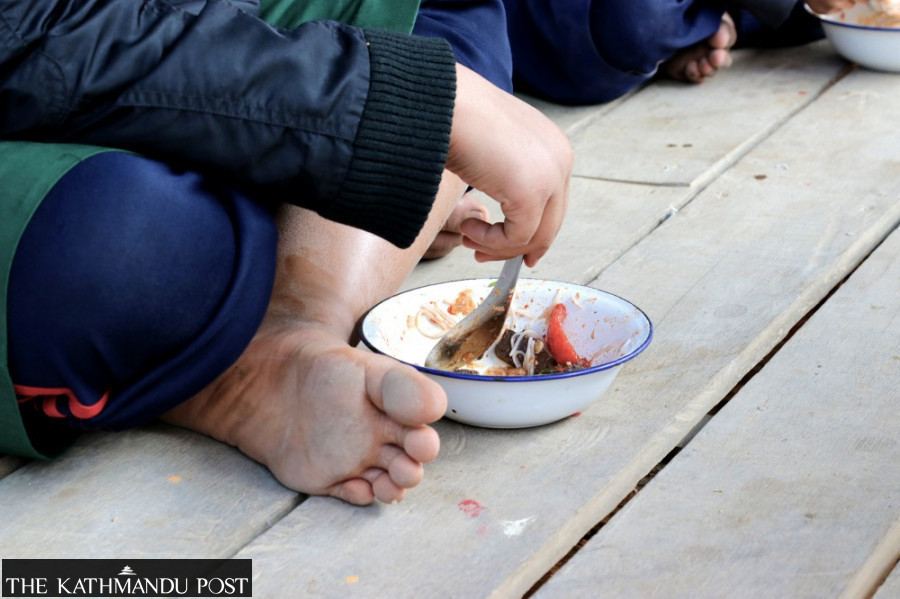Health
Severe wasting in two eastern districts hints at a hidden health crisis
High prevalence of an acute form of malnutrition in and around Tarai, the country’s food basket, is alarming. Children are not getting enough nutritious food.
Arjun Poudel
Around 18 percent of under-five children in Saptari district of Madhesh Province and Udayapur district of Province 1 have been found suffering from wasting, the most immediate, visible, and life-threatening form of malnutrition.
According to officials at the Ministry of Health and Population, a study carried out in 2019-2020 showed a high prevalence of acute forms of malnutrition in the said districts, which are also considered the country’s food baskets.
“The national average of wasting is 12 percent. But around 18 percent of children from Saptari and Udayapur districts are found to be affected by wasting, which is alarming,” said Lila Bikram Thapa, chief of the Nutrition Section at the Family Welfare Division of the Department of Health Services. “The average wasting percentage of the two districts is similar to the districts of Karnali Province.”
Malnutrition is slowly developing into a silent health crisis. The country has made significant progress in reducing stunting among children under five. Stunting decreased from 57 percent in 2001 to 32 percent in 2019, according to the Multiple Indicator Cluster Surveys (MICS 2019).
However, incidents of wasting, a debilitating disease that causes muscle and fat tissues to waste away, among children under five, have barely budged, from 11 percent in 2001 to 12 percent in 2019.
Wasting or low weight for one’s height in children, if not treated properly and on time, is associated with a higher mortality risk, according to the World Health Organisation.
“High prevalence of wasting means children of the said age group are not getting enough nutritious foods and they are braving poor water and sanitation conditions,” said Dr Atul Upadhyay, a nutritionist. “The study shows that greater availability of foods does not mean children are getting adequate nutrition too.”
Experts say malnutrition affects children’s mental growth, too, which in turn undermines the country’s economic health. It weakens intellectual capacity, limits productivity in adulthood, and increases vulnerability to certain diseases.
“The report suggests that a blanket approach to tackling malnutrition is not yielding the desired results and the problems are instead being exacerbated,” said Upadhyay. “We found heightened levels of wasting in certain districts because we closely studied those places. There may be many other less-studied places with similar levels of wasting.”
The Ministry of Health and Population said it has been planning to carry out a smart nutrition survey in all eight districts of Madhesh Province and in Bajura of Sudurpaschim Province to understand the nutrition status of under-five children.
“Even to intervene, we need to know the status of malnutrition,” said Thapa, chief of the Nutrition Section. “So we are now undertaking a study with UNICEF’s technical and financial support.”
Nepal also has an international obligation to improve the condition of malnourished children.
The country needs to reduce stunting to 15 percent from the existing 32 percent by 2030 in order to meet the United Nations-backed Sustainable Development Goals (SDGs) targets, wasting to 4 percent from the current 12 percent, underweight to 10 percent from the existing 27 percent and anaemia to 10 percent from over 52 percent in 2016.
SDGs, a follow-up on the Millennium Development Goals (MDGs), aim to end poverty and hunger and all forms of inequality in the world by 2030, and Nepal has committed to meeting the goals.
Progress toward the SDG targets on stunting and wasting is not advancing at the speed, scale or equity required, and any little progress may be further derailed by the effects of the Covid pandemic.
Nutritionists believe the problem of malnutrition has worsened during the pandemic.
UNICEF warned in January that Nepal’s significant progress in the nutrition of mothers and children was at risk due to current inequalities and the pandemic.
According to a special supplement of the Maternal and Child Nutrition Journal of the United Nations Children Fund, Nepal still faces considerable nutrition-related challenges.
UNICEF recommended a multisystem approach involving food, health, water and sanitation, education, and social protection systems to improve the health of Nepali children.
The UN agency also urged the government and partner agencies to improve children’s health by improving access to nutritious, safe, affordable, and sustainable diets throughout childhood, adolescence and years of childbearing.




 8.12°C Kathmandu
8.12°C Kathmandu














